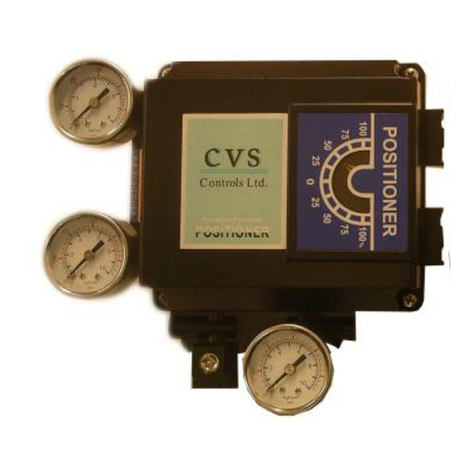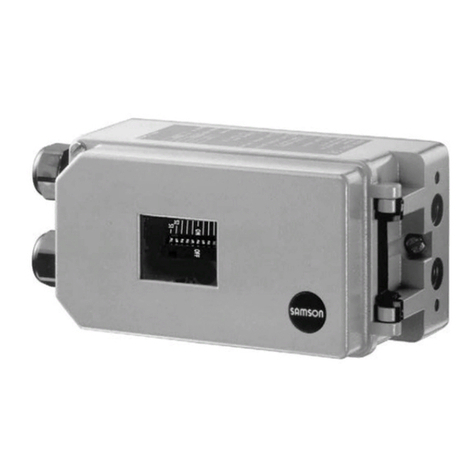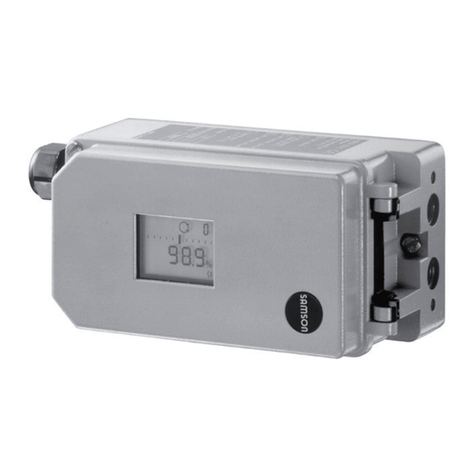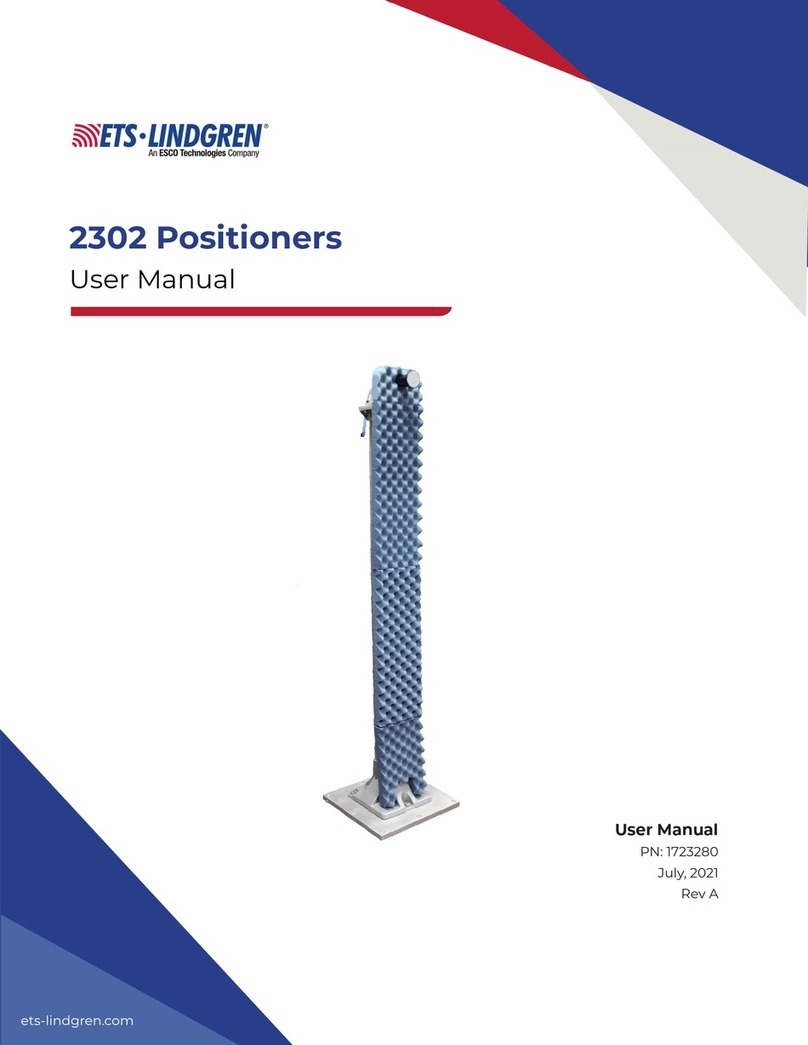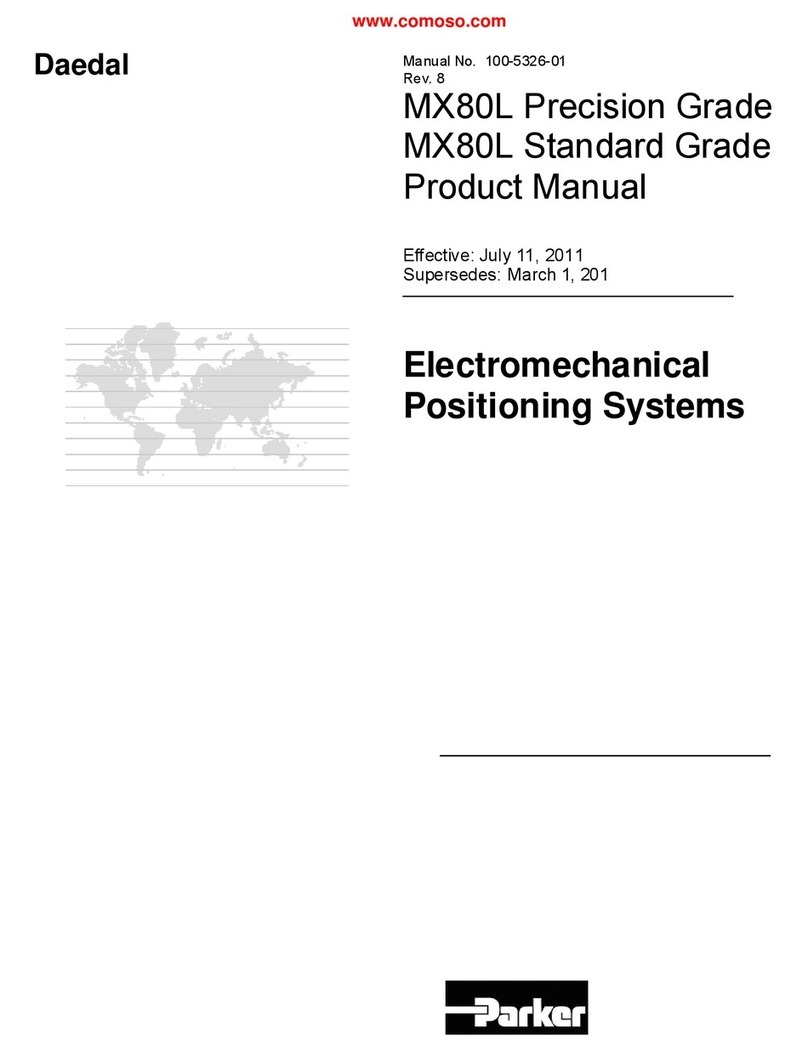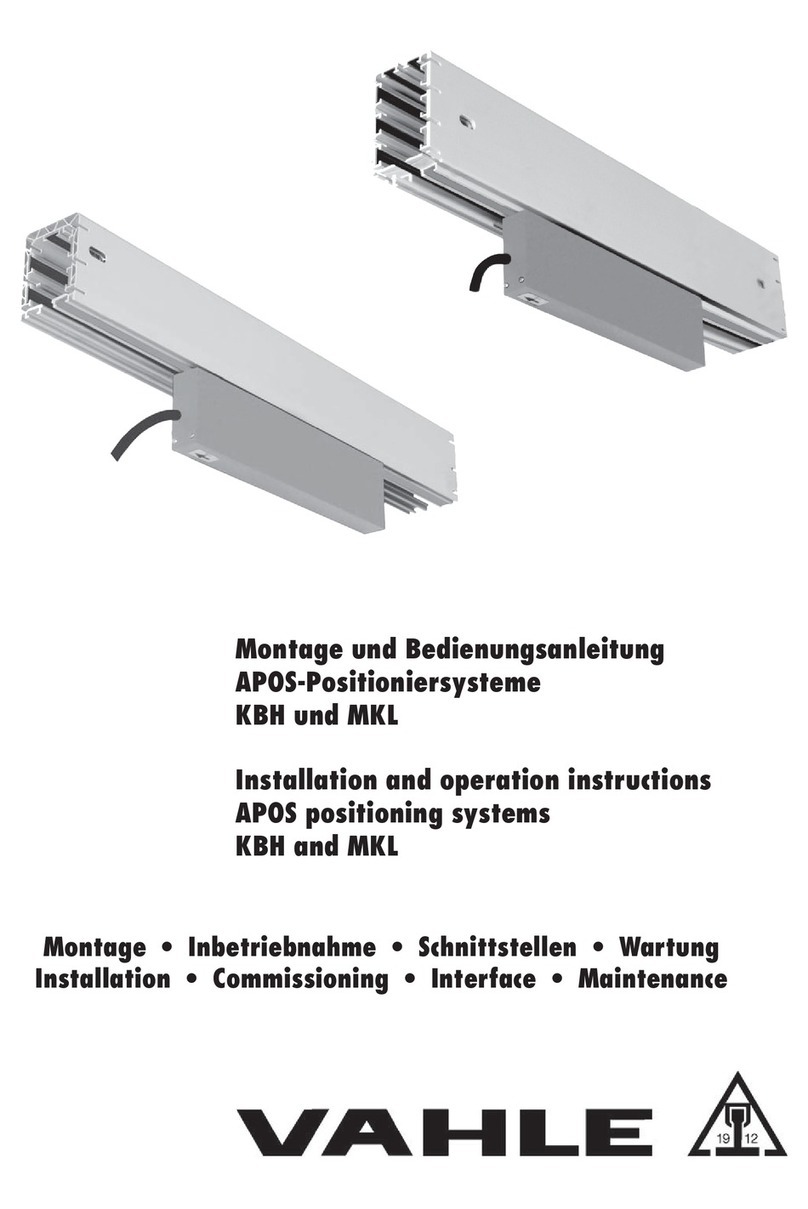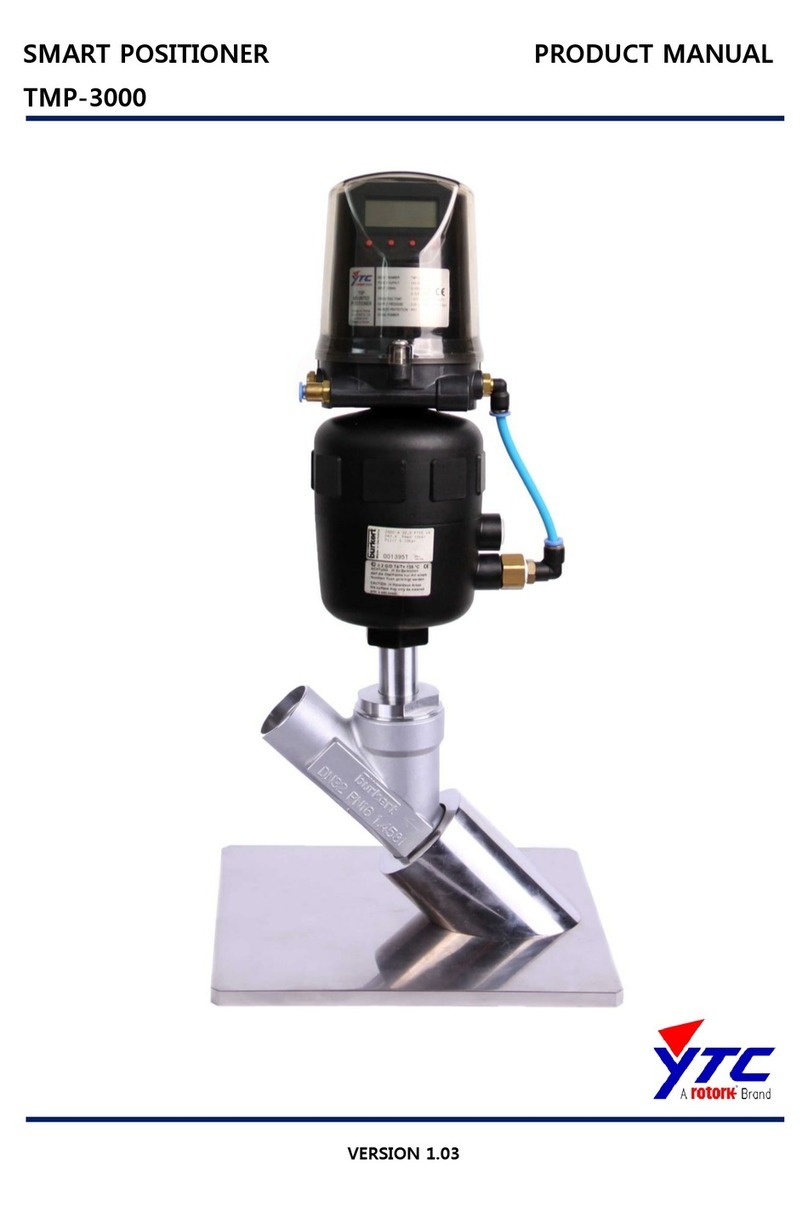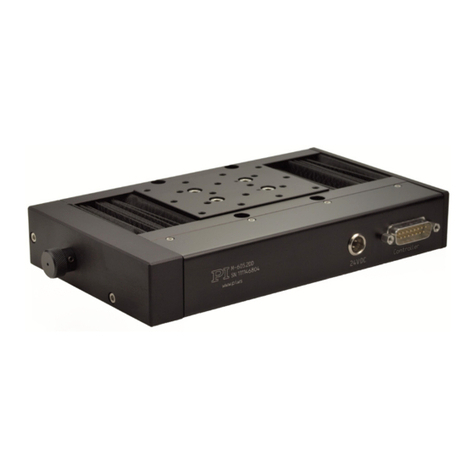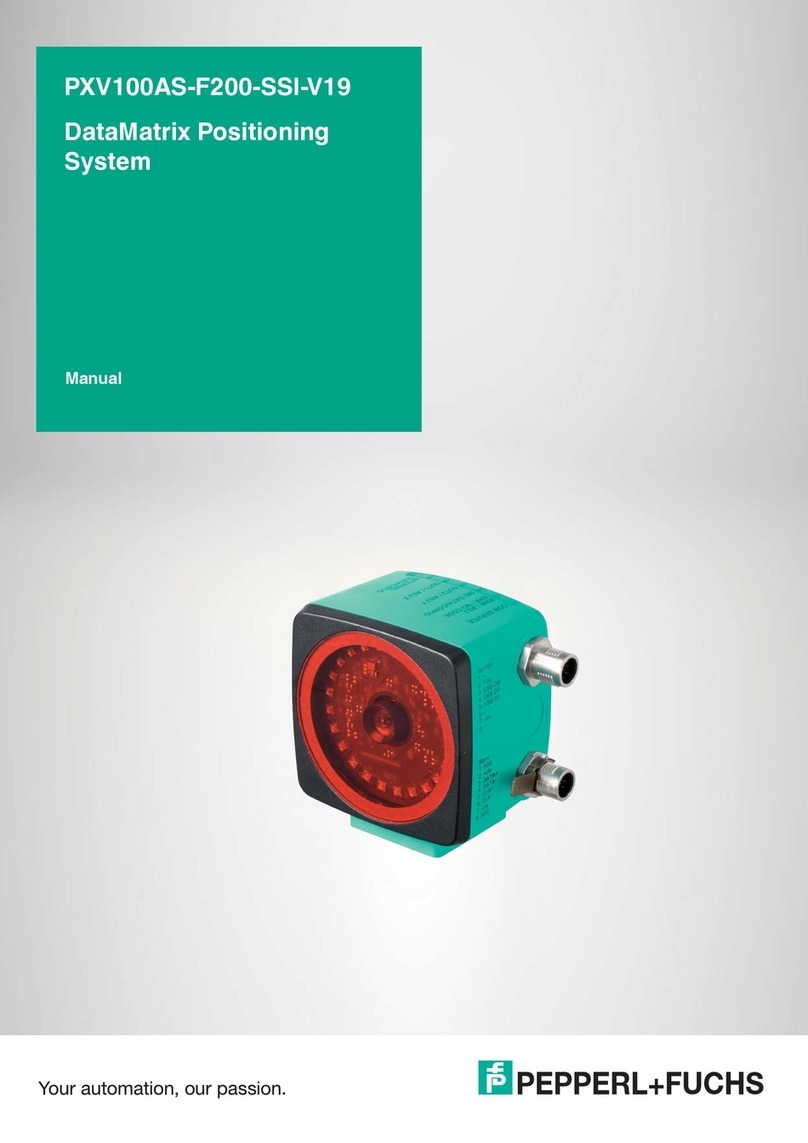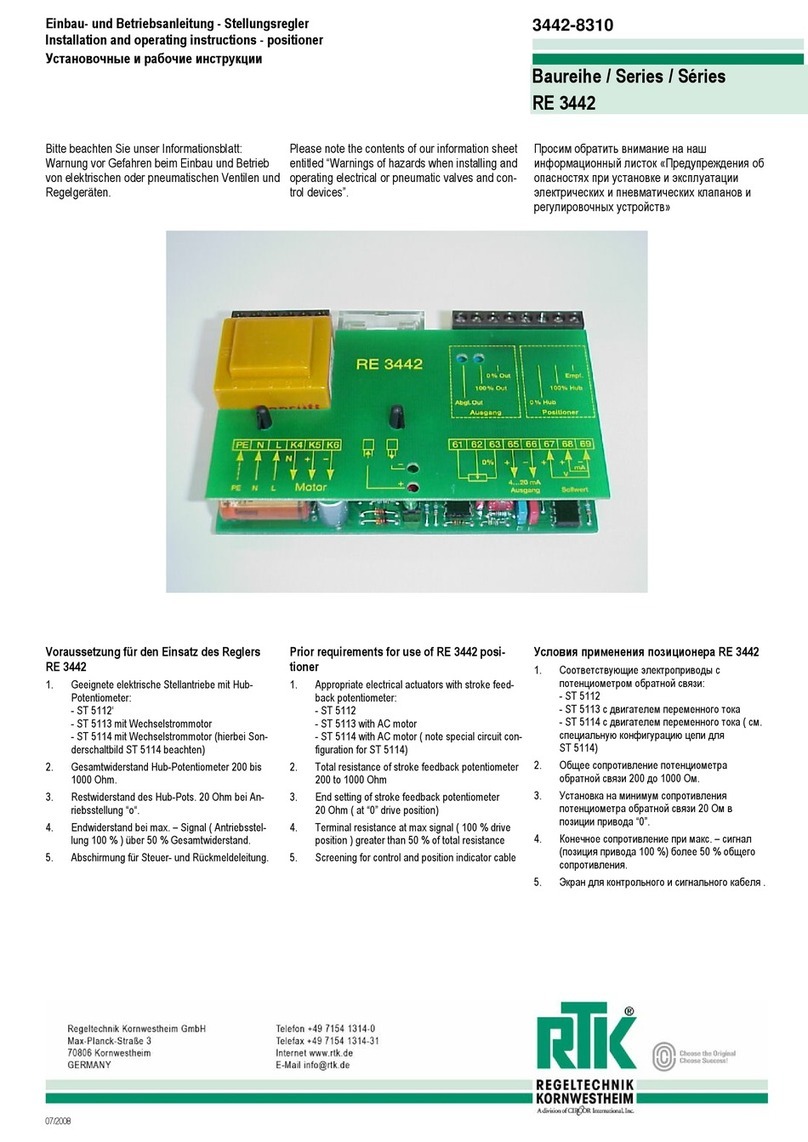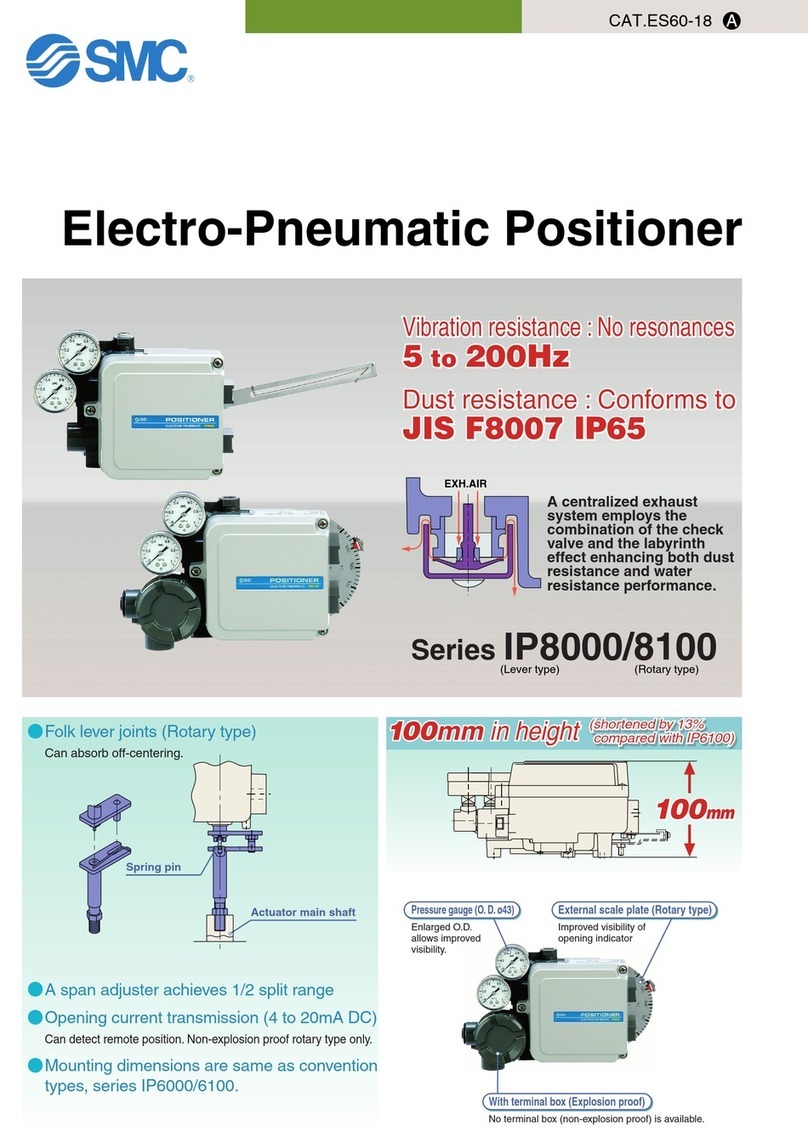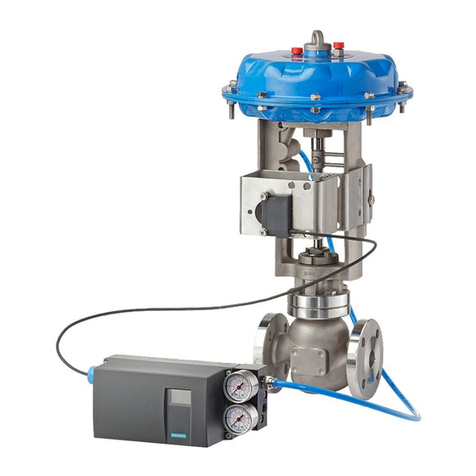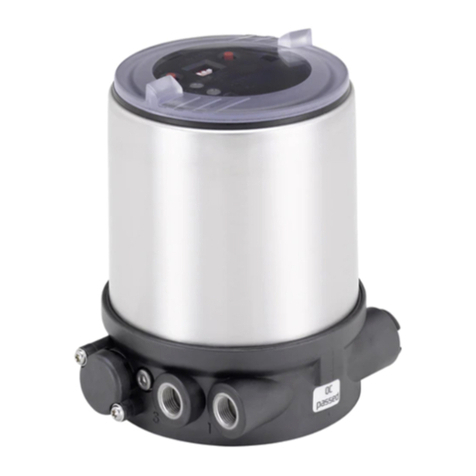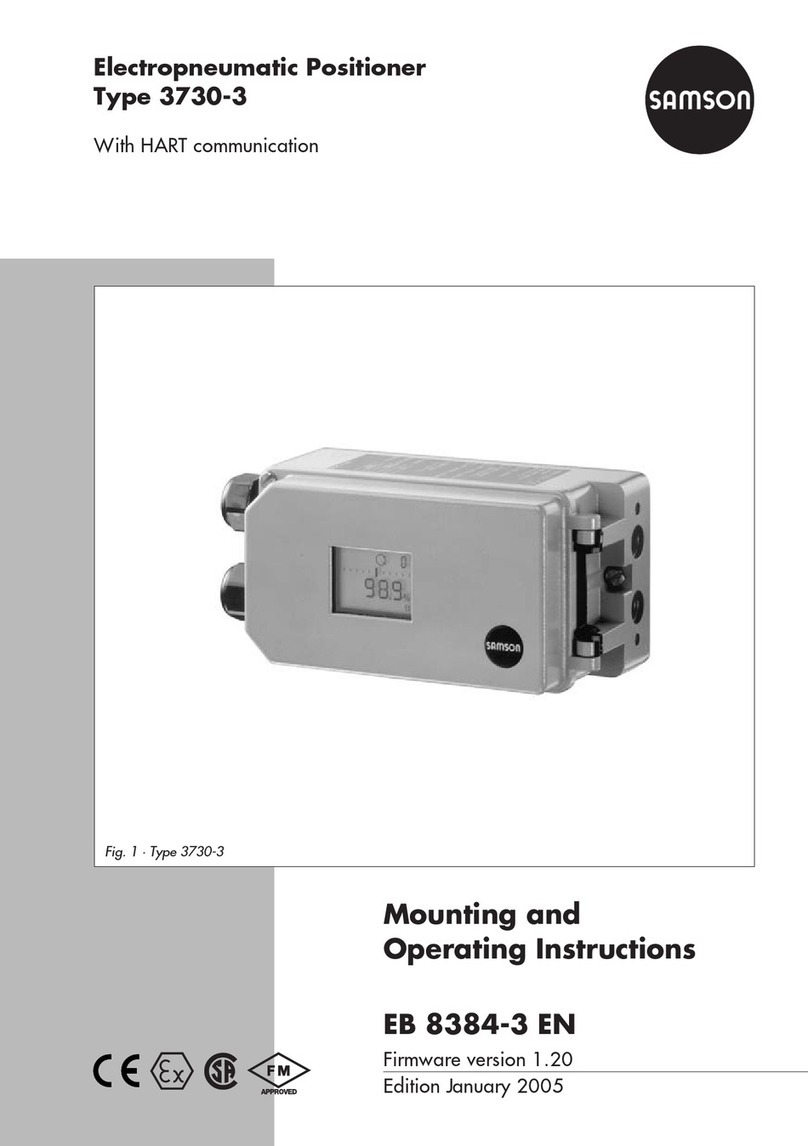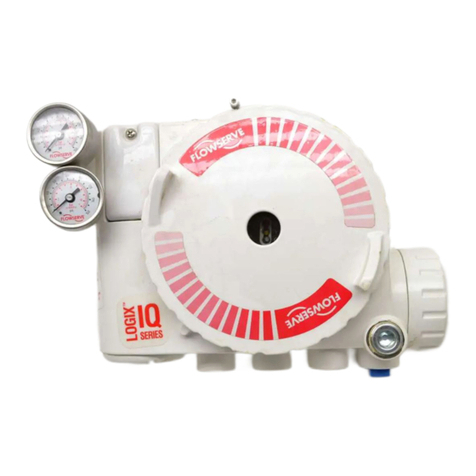
APOS Montageanleitung Mounting instructions
6
4 Allgemeines
bGefahr durch Quetschen zwischen
bewegten und festen Teilen!
Es muss sichergestellt werden, dass
durch die Anordnung von Strom-
schienen und Schleifleitungen und
Stromabnehmern und Mitnehmer-
armen die Sicherheitsabstände von
0,5m zwischen festen und beweg-
lichen Anlageteilen zur Vermeidung
von Quetschgefahren nicht unter-
schritten werden!
SBeschädigungsgefahr!
Einspeisungen in der Nähe des
gebäudeseitigen Netzanschlusses
einsetzen! Die Netzanschlusskabel
dürfen die Ausdehnung der Schleif-
leitung nicht behindern!
bBeschädigungsgefahr!
Anlagenspezifische
Dokumentation beachten!
Beachten Sie unbedingt die anlagen-
spezifischen Unterlagen, in denen die
auftragsbezogenen Verlegungspläne
den Anlagenaufbau abbilden, ins-
besondere bei Anlagenlängen über
150 m.
HDie Montage des Wegmessystems
erfolgt nach der Schleifleitungsmon-
tage. Die Schleifleitungsmontage und
andere Arbeiten sind entsprechend
der Montageanleitung KBH bzw. MKH
durchzuführen! Montage von Anla-
genlängen > m sind nur durch
VAHLE Monteure durchzuführen!
Die Schleifleitungsenden sind nach der
APOS-Montage zu montieren.
APOS kann nur bei geraden Anlagen ohne
Dichtlippen, Trichter, Dehnverbinder und
Ausbaustellen eingesetzt werden.
Bei APOS-Nachrüstungen sind vorhan-
dene Kopfeinspeisungen durch Strecken-
einspeisungen zu ersetzen, vorhandene
Strekkeneinspeisungen der KBH durch
APOSangepasste Einspeisungen ersetzen.
Die Montage erfolgt mit zwei Personen.
Bei Einsatz von verfahrbaren Hubarbeits-
bühnen ist zusätzliches Bedienpersonal
erforderlich.
HEine gut ausgerichtete Anlage ist
Voraussetzung für eine einfache
Montage des APOS-Codebandes.
Der Zustand bestehender Anlagen
ist zu überprüfen. Gegebenenfalls
ist die Anlage zu Reinigen und Aus-
zurichten, siehe Montageanleitung.
4 General
bRisk of pinching between mobile
and fixed components!
You must ensure that the arrange-
ment of the conductor system pro-
vides minimum distances (0.5 m)
between fixed and mobile plant
parts (i.e. between conductor rail,
collector trolleys and towing arms)
so as to avoid the risk of pinching!
SRisk of damage!
Install incoming power supply units
near the mains connection of the
building! The mains connecting
cables may not restrict the free
expansion and contraction of the
conductor systems!
bRisk of damage!
Observe the plant-specific
documentation!
Please make sure to observe the
plant-specific documents, which
contain the order-related installa-
tion drawings that illustrate the plant
layout, particularly with plant lengths
over 150 m.
H
The assembly of the positioning sys-
tem takes place after the assembly
of the conductor line. The conductor
line assembly and other work must
be carried out in accordance with the
KBH or MKH mounting instructions!
Installations exceeding m have
to be carried out by Vahle mechanics.
The ends of the conductor line must be
mounted after the APOS assembly.
APOS can only be used for straight instal-
lations without sealing strips, funnels, ex-
pansion joints and deinstallation points.
For APOS retrofits, existing head power
feeds must be replaced by line feeds,
existing KBH line feeds must be replaced
by APOS adapted power feeds.
Installation is carried out by two people.
Additional staff is required for aplications
with movable lifting platforms.
HA well aligned plant is the prerequisite
for easy assembly of the APOS code
strip. The condition of existing plants
must be checked. If necessary, the
system must be cleaned and aligned,
see mounting instructions.
